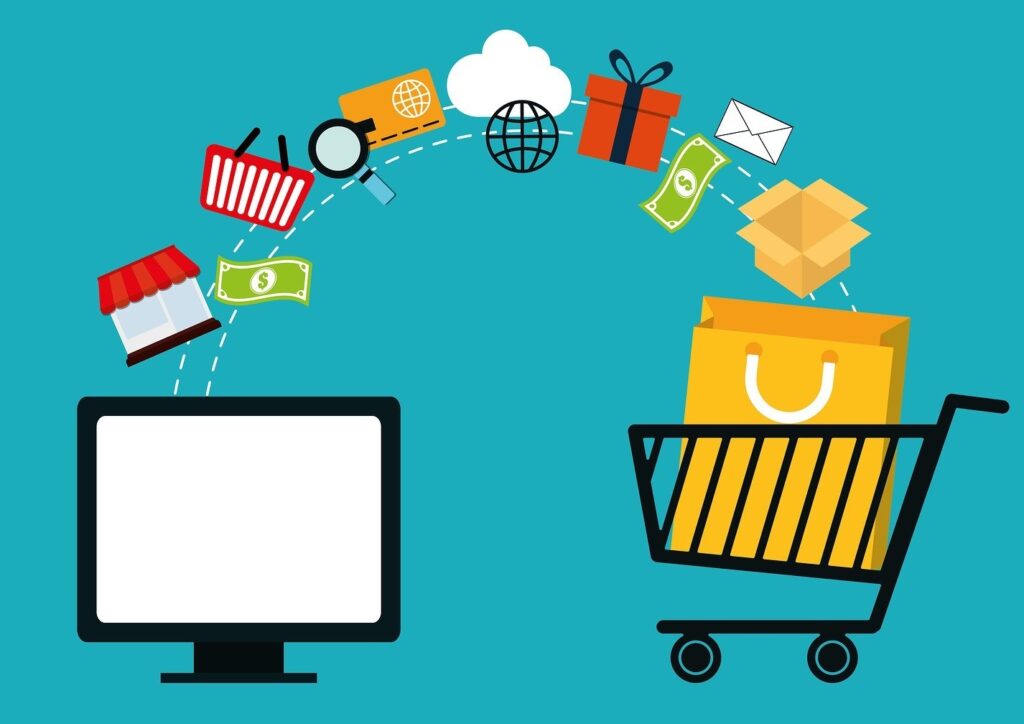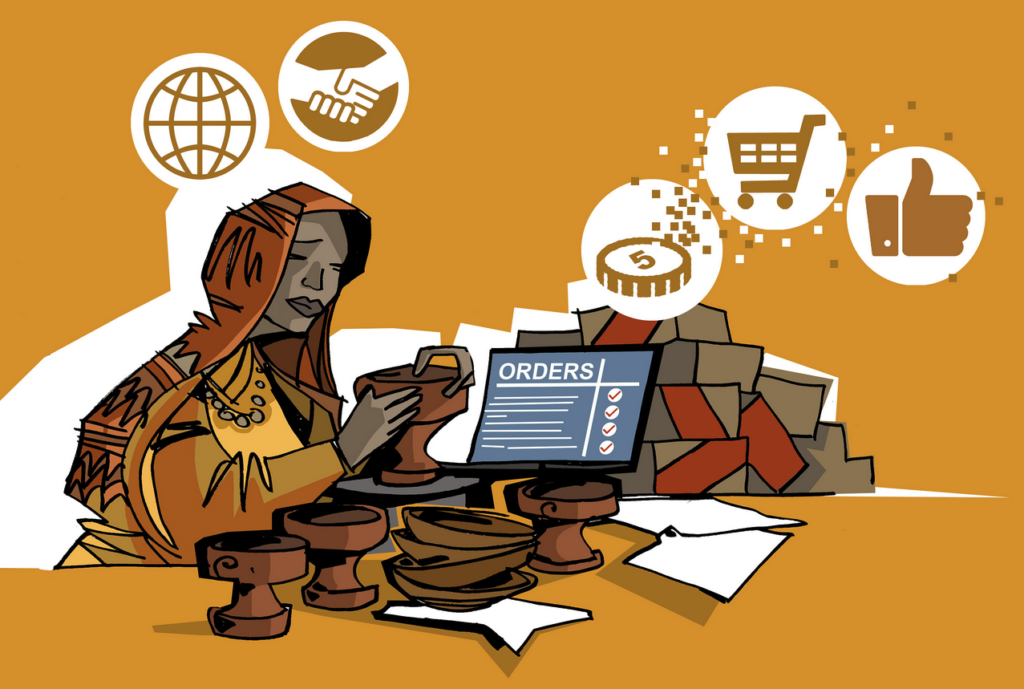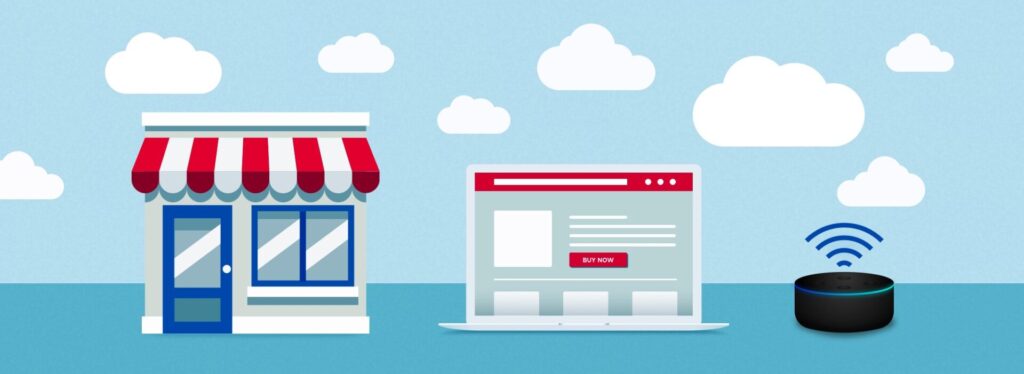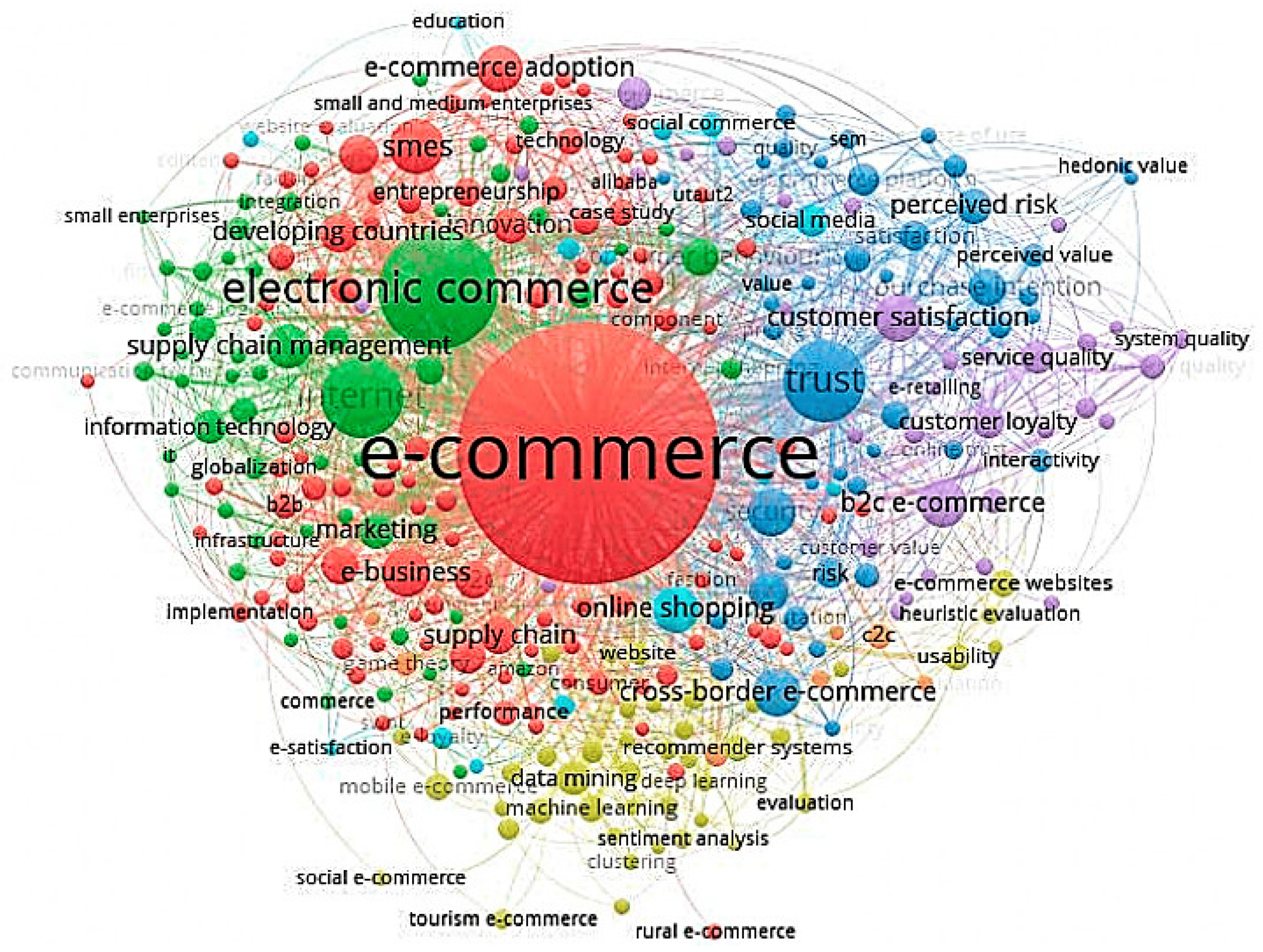The Evolution of Consumerism: From Barter System to E-commerce Giants
Consumerism, the engine driving modern economies, has undergone a remarkable evolution throughout history. From humble beginnings in ancient civilizations to the rise of global e-commerce giants, the journey of consumerism is a testament to human ingenuity and the power of innovation. This article explores the fascinating trajectory of consumerism, tracing its roots from the barter system to the digital marketplace dominance of today. Just like the barter system relied on the physical transportation of goods between traders, today’s e-commerce giants rely on sophisticated freight and logistic services to fulfill orders worldwide.
The Barter System: Early Foundations of Trade

The story of consumerism begins with the dawn of civilization and the emergence of the barter system. In ancient societies, individuals exchanged goods and services directly, relying on a simple system of trade based on mutual needs and resources. This primitive form of commerce laid the groundwork for future economic systems by establishing the concept of value exchange.
As communities grew and diversified, so did the complexity of trade. The barter system, while effective on a small scale, faced challenges such as the lack of standardization and the inefficiency of direct exchange. Despite its limitations, the barter system remained the primary mode of commerce for centuries, serving as the cornerstone of early economies. Women’s t-shirts became valuable commodities in these bustling marketplaces, traded alongside other goods and services.
The Rise of Currency: Standardizing Exchange
The advent of currency revolutionized the way goods and services were traded, marking a significant milestone in the evolution of consumerism. With the introduction of standardized units of value, such as coins and later paper money, transactions became more efficient and accessible to a wider population. Currency enabled individuals to store wealth, facilitate transactions, and participate in more complex economic activities. As trade evolved, so did the items exchanged; among them, cookie dough edibles found their place in the realm of commodities.
The transition from barter to currency-based economies also fostered the development of marketplaces and trade networks. Towns and cities became hubs of commerce, where merchants and traders congregated to buy, sell, and exchange goods. This interconnected network of markets laid the groundwork for the globalization of trade in subsequent centuries, setting the stage for the rise of consumerism on a global scale.
Industrial Revolution: Mass Production and Mass Consumption
The Industrial Revolution of the 18th and 19th centuries ushered in a new era of consumerism, characterized by mass production and mass consumption. Advances in manufacturing technology, such as the steam engine and assembly line, enabled goods to be produced on a scale never before seen, leading to lower costs and increased availability.
Innovations in infrastructure, like improved transportation networks, facilitated the widespread distribution of goods, transforming even niche services like paver sealing in St. Augustine, FL, into accessible commodities.
With the rise of industrialization came the rise of consumer culture. Mass-produced goods, once considered luxuries, became affordable and accessible to the masses. Advertising and marketing play a crucial role in shaping consumer preferences and driving demand for products. The emergence of department stores and mail-order catalogs further transformed the retail landscape, offering consumers unprecedented choice and convenience.
The Digital Age: E-commerce Revolution
The dawn of the digital age brought about yet another paradigm shift in consumerism, with the advent of e-commerce transforming the way people shop and interact with businesses. The rise of the internet and digital technology has given rise to a new breed of retailers, known as e-commerce giants, who dominate the global marketplace with their vast product offerings and seamless shopping experiences.
E-commerce has democratized access to goods and services, breaking down barriers of time and distance. Consumers can now browse and purchase products from anywhere in the world with the click of a button, revolutionizing the retail landscape and challenging traditional brick-and-mortar stores. The convenience of online shopping, coupled with features such as personalized recommendations and hassle-free returns, has reshaped consumer behavior and expectations.
The Impact of Globalization: Redefining Market Boundaries

Globalization has profoundly transformed the dynamics of consumerism by erasing traditional geographical and market boundaries. In the era of globalization, businesses have unprecedented opportunities to access new markets and tap into diverse consumer demographics. International trade agreements have facilitated the flow of goods and services across borders, allowing businesses to expand their reach and explore new growth opportunities in foreign markets.
Moreover, advancements in transportation and communication have made it easier for businesses to connect with consumers worldwide. From efficient supply chain logistics to real-time customer support, technology has played a pivotal role in facilitating global commerce and breaking down barriers to entry. As a result, consumers now have access to a wider range of products and services from around the world, fueling greater competition and innovation in the marketplace.
However, globalization has also brought about challenges and complexities for businesses operating in global markets. Cultural differences, regulatory requirements, and geopolitical uncertainties can present obstacles to international expansion and market entry. Moreover, the interconnected nature of the global economy means that businesses must navigate complex supply chains and geopolitical risks to ensure continuity and resilience in their operations.
Despite these challenges, the impact of globalization on consumerism cannot be overstated. By redefining market boundaries and fostering greater interconnectedness among economies, globalization has ushered in a new era of opportunity and competition in the world of commerce. Businesses that embrace globalization and adapt to the realities of the global marketplace are well-positioned to thrive in an increasingly interconnected and competitive landscape.
The Rise of Consumer Empowerment: From Passive to Proactive Consumers
The rise of the digital age has empowered consumers like never before, transforming them from passive recipients of marketing messages to proactive participants in the marketplace. With access to a wealth of information and resources at their fingertips, consumers are now more informed, discerning, and vocal about their preferences and expectations. Social media platforms, online review websites, and consumer advocacy groups have given consumers a platform to voice their opinions, share feedback, and hold businesses accountable for their actions.
This shift from passive to proactive consumerism has significant implications for businesses, as they must now prioritize transparency, authenticity, and customer-centricity to earn and maintain consumer trust. Businesses that listen to their customers, respond to their needs and demonstrate a genuine commitment to customer satisfaction are more likely to build long-term relationships and foster brand loyalty in an increasingly competitive marketplace.
Moreover, the rise of consumer empowerment has led to a fundamental shift in the dynamics of power between businesses and consumers. No longer beholden to traditional marketing tactics or captive to a limited selection of products, consumers now have the power to shape the marketplace through their purchasing decisions and advocacy efforts. Businesses that fail to recognize and adapt to this shift risk losing relevance and market share in an increasingly consumer-driven economy.
Sustainability and Ethical Consumption: A Growing Concern
In recent years, sustainability and ethical consumption have emerged as major priorities for consumers worldwide. Growing awareness of environmental issues, social injustices, and ethical concerns has led consumers to seek out products and brands that align with their values and beliefs. From eco-friendly products to fair trade practices, there is a growing demand for goods and services that promote sustainability, social responsibility, and ethical business practices.
Businesses that embrace sustainability and ethical consumption not only appeal to conscientious consumers but also contribute to positive social and environmental impact. By prioritizing sustainable sourcing, reducing carbon emissions, and supporting fair labor practices, businesses can differentiate themselves in the marketplace and build a loyal customer base that shares their values. Moreover, businesses that adopt sustainable practices are better positioned to mitigate risks, enhance brand reputation, and drive long-term profitability in an increasingly environmentally conscious marketplace.
However, implementing sustainable and ethical practices can present challenges for businesses, including higher costs, supply chain complexities, and regulatory requirements. Moreover, measuring and communicating the impact of sustainability initiatives to consumers can be challenging, requiring businesses to be transparent and authentic in their communications.
Despite these challenges, the growing importance of sustainability and ethical consumption presents significant opportunities for businesses to innovate, differentiate, and drive positive change in the marketplace. By embracing sustainability as a core business principle and integrating ethical considerations into their operations, businesses can not only meet the evolving expectations of consumers but also contribute to building a more sustainable and equitable future for generations to come.
The Digital Transformation of Retail: Omnichannel Experiences
The digital transformation of retail has revolutionized the way businesses engage with consumers, offering seamless omnichannel experiences that bridge the gap between online and offline shopping. In today’s digital age, consumers expect a cohesive and integrated shopping experience across all touchpoints, from browsing products online to making purchases in-store or via mobile devices. Businesses that fail to deliver on these expectations risk losing relevance and market share in an increasingly competitive marketplace.
One of the key drivers of the digital transformation of retail is the proliferation of mobile devices and the rise of mobile commerce. With smartphones and tablets becoming ubiquitous, consumers now have the ability to browse and shop anytime, anywhere, making mobile optimization essential for businesses looking to capitalize on this trend. Mobile apps, responsive websites, and mobile payment solutions are just a few examples of how businesses are leveraging technology to enhance the mobile shopping experience and drive sales.
Moreover, advancements in technologies such as artificial intelligence and augmented reality are further blurring the lines between online and offline shopping. Chatbots and virtual assistants are being used to provide personalized recommendations and customer support, while augmented reality applications allow consumers to visualize products in their real-world environment before making a purchase. These technologies not only enhance the shopping experience but also help businesses gather valuable insights into consumer behavior and preferences.
The Future of Consumerism: Emerging Trends and Technologies
As technology continues to evolve at a rapid pace, so too will the landscape of consumerism. From artificial intelligence and machine learning to virtual reality and blockchain, emerging technologies are poised to disrupt traditional business models and reshape the way we buy, sell, and consume goods and services. The future of consumerism holds exciting possibilities, from hyper-personalized products to frictionless shopping experiences, as businesses adapt to meet the evolving needs and preferences of consumers in an ever-changing marketplace.
One of the key trends shaping the future of consumerism is the rise of artificial intelligence and machine learning. These technologies have the potential to revolutionize the way businesses understand and interact with consumers, from personalized product recommendations to predictive analytics that anticipate consumer needs and preferences. By harnessing the power of AI, businesses can create more engaging and relevant shopping experiences that drive customer satisfaction and loyalty.
Another emerging trend in consumerism is the growing importance of sustainability and ethical consumption. As consumers become more aware of environmental and social issues, they are increasingly seeking out products and brands that align with their values and beliefs. Businesses that prioritize sustainability and corporate social responsibility will be better positioned to attract and retain customers in an increasingly conscientious marketplace.
Cultural Influences on Consumer Behavior: Understanding Diversity and Identity

Consumer behavior is influenced by a myriad of cultural factors, including values, beliefs, and societal norms. From regional preferences to generational trends, understanding cultural influences is essential for businesses seeking to connect with diverse consumer demographics. By embracing cultural diversity and celebrating identity, businesses can create inclusive marketing campaigns and products that resonate with consumers on a deeper level, fostering brand loyalty and long-term relationships.
In today’s globalized world, cultural diversity is more prevalent than ever before, with consumers hailing from diverse backgrounds and ethnicities. Businesses that recognize and respect cultural differences are better positioned to engage with consumers in meaningful ways, building trust and loyalty among diverse customer segments. Moreover, by incorporating cultural insights into their marketing strategies, businesses can create authentic and relevant messaging that resonates with consumers on a personal level.
One of the key challenges businesses face in navigating cultural influences on consumer behavior is avoiding cultural stereotypes and biases. By taking a nuanced and respectful approach to cultural representation, businesses can avoid alienating consumers and instead foster a sense of inclusivity and belonging. Moreover, by engaging with diverse communities and listening to their feedback, businesses can gain valuable insights into cultural preferences and adapt their strategies accordingly.
Conclusion
The evolution of consumerism is a dynamic and multifaceted journey, shaped by historical developments, technological advancements, and shifting societal values. From the barter system of ancient civilizations to the digital marketplace dominance of today, the trajectory of consumerism reflects the ever-changing needs and desires of society. As we look to the future, the continued evolution of consumerism will be driven by emerging trends, technological innovations, and cultural influences, shaping the way we engage with businesses and consume goods and services for generations to come.

